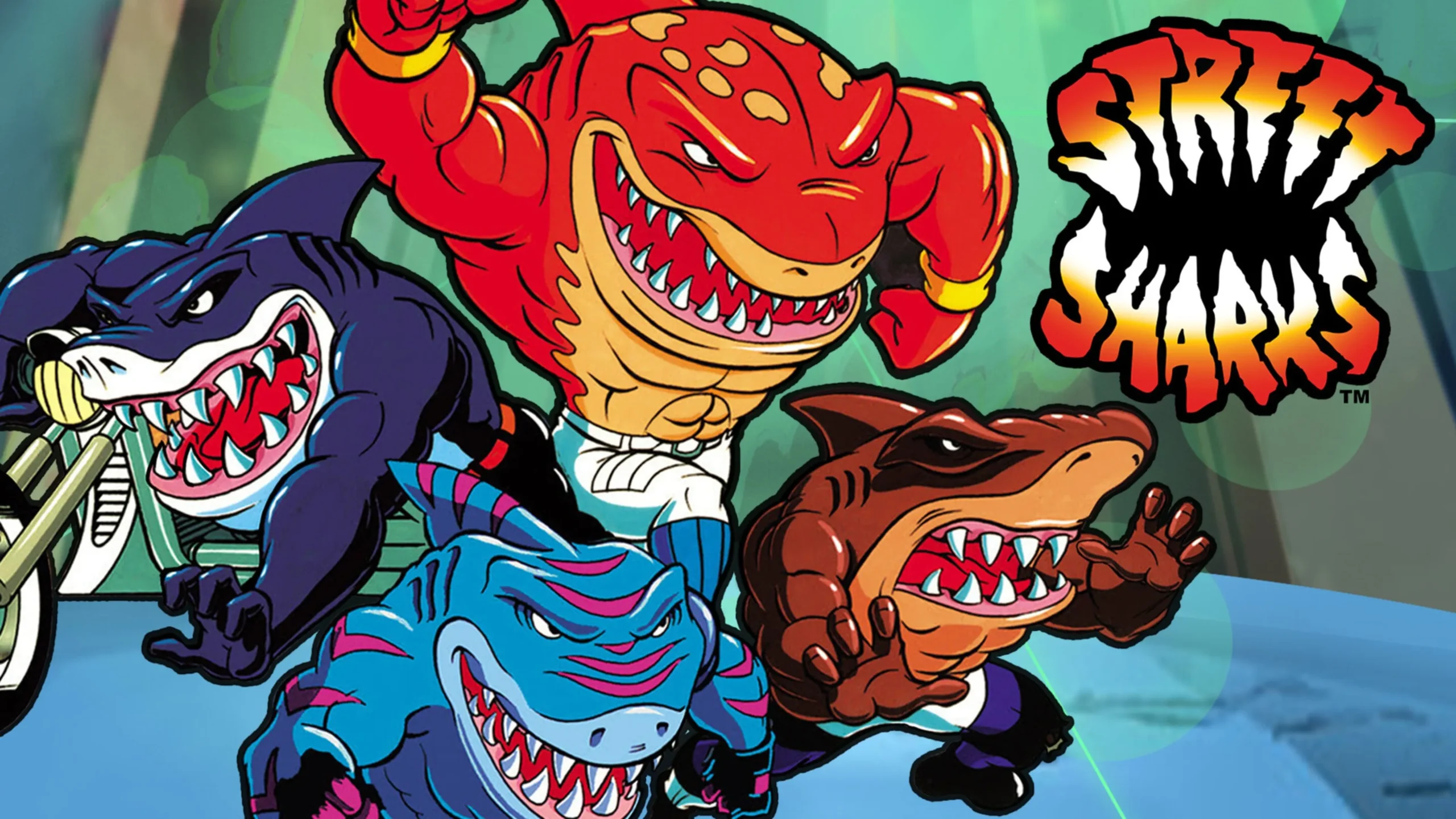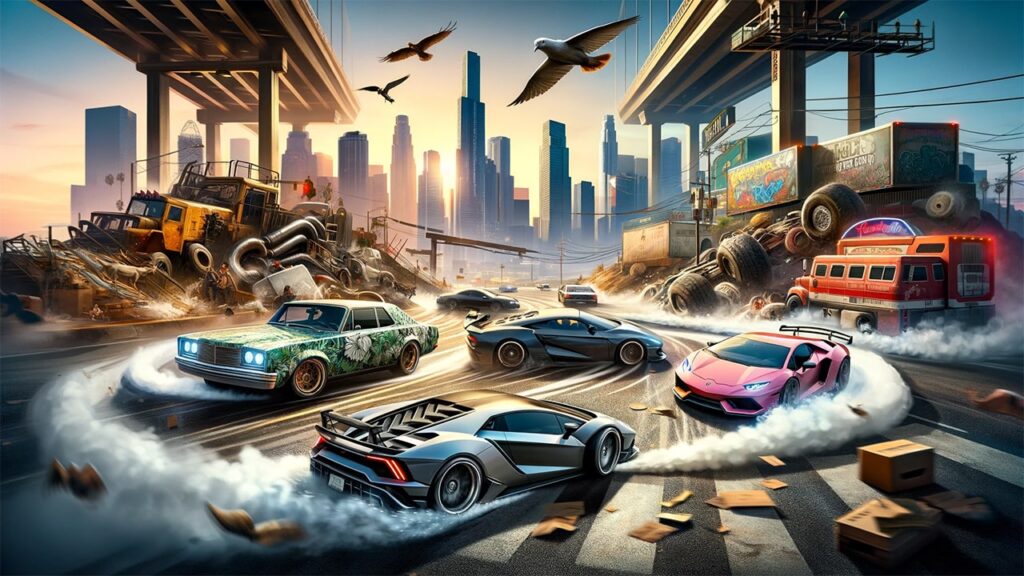
Introduction to Street Sharks
The franchise of Street Sharks emerged in the early 1990s, a period characterized by a burgeoning interest in anthropomorphized characters, blending action with imaginative storytelling. Created by the animation studio, Gary Schneider and his team at the company, it was designed to capture the attention of a younger demographic, especially those fascinated by both marine life and the superhero genre. The concept revolved around four unique character—Jab, Ripster, Streex, and Big Slammu—who were transformed from ordinary sharks into humanoid fighters through a scientific experiment gone awry.
These characters are not just mere figments of imagination; they embody traits that resonate deeply with themes of friendship, courage, and justice. Each shark has distinct personality traits and fighting styles, which serve to appeal to a diverse audience. Jab is characterized by his brawn and leadership qualities, while Ripster showcases agility and intellect. Streex, the most laid-back shark, adds humor to the mix, and Big Slammu often serves as the powerhouse of the group, bringing depth and strength. Together, they form a team that battles against a variety of villains, including the nefarious Dr. Paradigm, who embodies the classic trope of an evil scientist seeking dominion through forced experimentation.
The initial launch of the animated series marked a significant milestone in popular culture, as it wasn’t merely a standalone show. It reflected a larger trend of animated series during the 1990s, which sought to merge humor with action, drawing upon different aspects of storytelling to engage younger audiences. This appeal was further solidified through various merchandise, thereby establishing Street Sharks as a recognizable brand in its own right. As we delve deeper into the narrative, the combination of unique character development and dynamic action sequences showcases why the Street Sharks franchise holds a lasting place in pop culture history.
Character Analysis: Meet the Street Sharks
The Street Sharks series features five distinct characters, each contributing significantly to the narrative with their unique traits and abilities. At the forefront is Jab, the natural leader of the group. Characterized by his jovial nature and assertiveness, Jab not only serves as a protector of his friends but also acts as the moral compass. His ability to strategize and motivate those around him is essential, particularly when facing the nefarious plots of their enemies.
Next is Streex, famed for his agility and speed. With a personality that balances humor and seriousness, Streex often provides comic relief while also bringing invaluable skills to battles. His competitive spirit drives him to push his teammates to their limits, reinforcing a message of perseverance and self-improvement. The camaraderie among the Street Sharks is showcased well through his interactions with Jab, as they often find themselves in friendly competitions that strengthen their bond.

Big Slammu is the powerhouse of the team, known for his brute strength and gentle demeanor. Despite his intimidating size, he embodies the themes of compassion and loyalty. His character develops as the series progresses, illustrating that one’s strength can be matched by a big heart. The dynamic between Big Slammu and the other sharks highlights the importance of acceptance, as they learn to appreciate each other’s strengths and weaknesses.
Ripster, on the other hand, is the brains of the group, equipped with technological know-how and tactical skills. His analytical mind often turns the tide during conflicts, while his geeky personality endears him to the audience. The evolution of Ripster from an introverted genius to a more confident hero serves as an inspiring portrayal of character growth. Together, these Street Sharks embody teamwork and camaraderie, showcasing how diverse skill sets can harmonize into a powerful collective force, enhancing the storyline throughout the series.
Cultural Impact and Legacy
The 1990s saw the rise of numerous animated series that left a distinct mark on pop culture, one of which was Street Sharks. With its unique premise of half-man, half-shark protagonists, the show quickly captured the imaginations of children, creating a wave of enthusiasm that transcended television. The cultural impact of Street Sharks during its original run is notably reflected in the plethora of merchandise that followed. Action figures, video games, and comic books were produced in abundance, allowing fans to engage with their favorite characters beyond the small screen. The innovative crossover of sharks with street culture resonated well with its target demographic, fostering a fervent fan base.
This animated series not only contributed to merchandise sales but also influenced the animation landscape significantly. Street Sharks, along with other noteworthy shows of the time, played a role in the evolution of action-oriented narratives within children’s programming. It pushed the boundaries of storytelling and character design, paving the way for more adventurous and edgy content in subsequent animated series. As a cohort of pop culture phenomena, Street Sharks helped to establish a trend towards anthropomorphic characters that continue to thrive in today’s media.
Conclusion: The Future of Street Sharks
The timeless appeal of the Street Sharks franchise continues to resonate with fans, suggesting a promising future for this unique blend of action and adventure. As we observe the ongoing development of projects aiming to revive this classic concept, it is clear that the interest remains robust. Social media platforms have become a hub for nostalgia-driven conversations, allowing longtime fans and newer generations to engage in discussions about their favorite characters and storylines from the series.
The potential reboots or reimaginings of the streetwise aquatic heroes could infuse fresh narratives, aligning the franchise with modern storytelling techniques. The idea of integrating contemporary themes, such as environmental conservation and social justice, could enrich the Street Sharks universe, making it relevant in today’s sociocultural climate. Fans are eager for innovative approaches that honor the original spirit while pushing boundaries to cater to a new audience.
Moreover, the creative community’s willingness to explore fan art, fiction, and even merchandise signifies the enduring legacy of Street Sharks. The emergence of new technologies in animation, graphic novels, and interactive media further enhances the likelihood of a resurgence in Street Sharks content. As creators seek to capture the essence of street culture intertwined with marine characteristics, a unique fusion may emerge, ensuring the franchise remains engaging and exciting.
In conclusion, the future of the Street Sharks franchise looks bright. With devoted fans advocating for its return, the possibility of new projects on the horizon signals that these iconic characters may once again take center stage. The Street Sharks have the potential to flourish in an ever-evolving entertainment landscape, captivating both loyal followers and newcomers alike. The synergy between nostalgia and contemporary storytelling presents an opportunity to redefine and invigorate the narrative of Street Sharks for generations to come.







